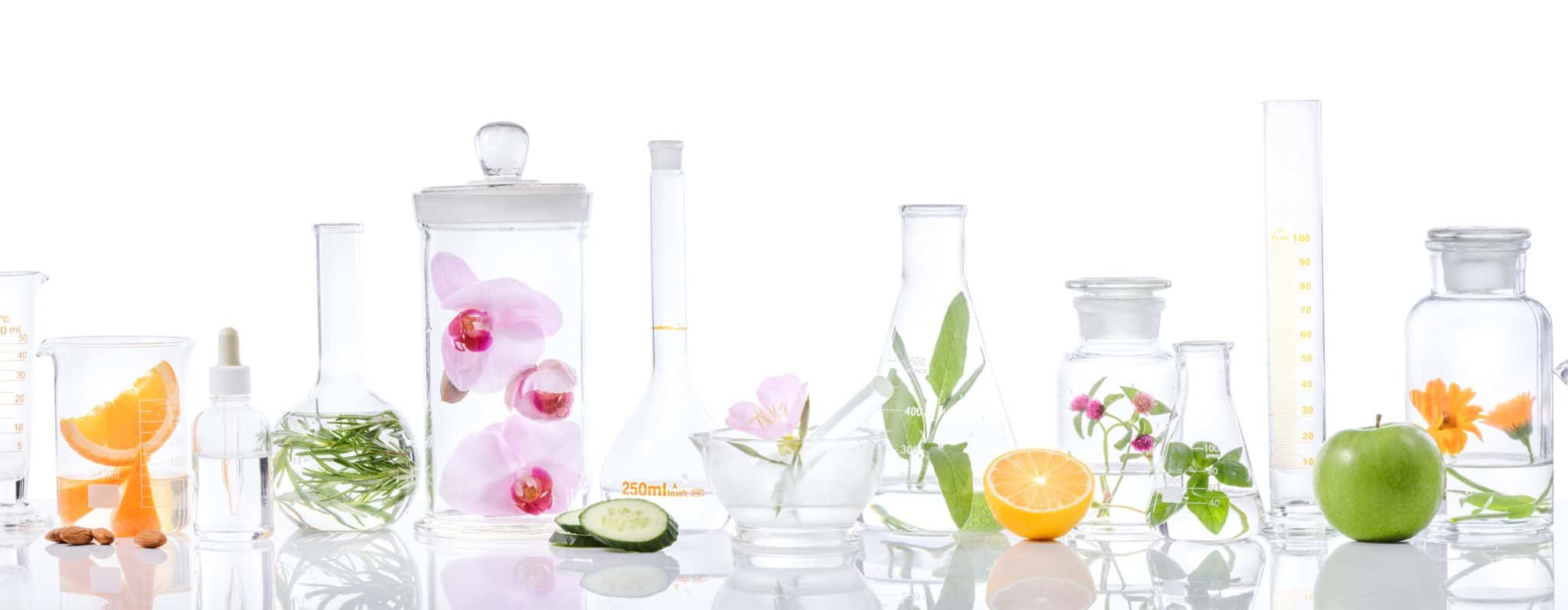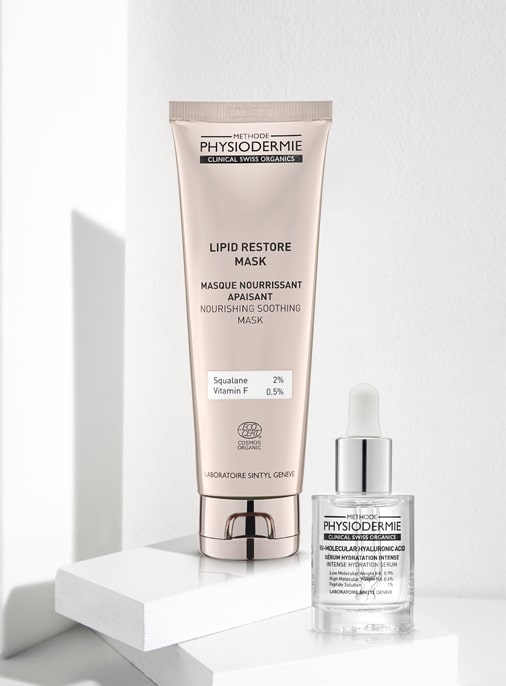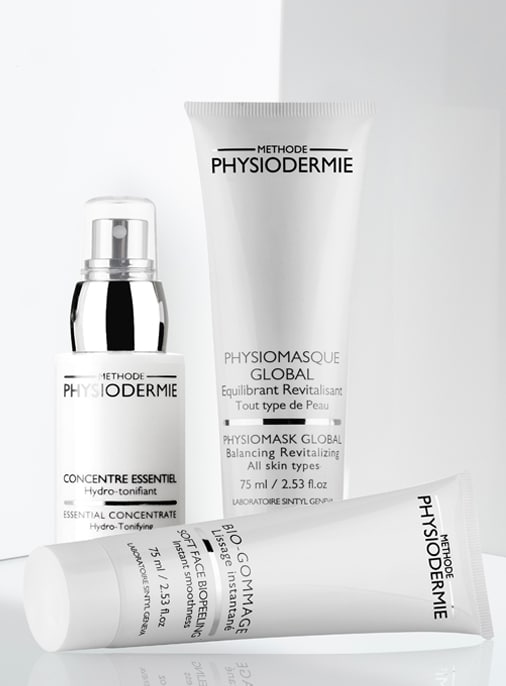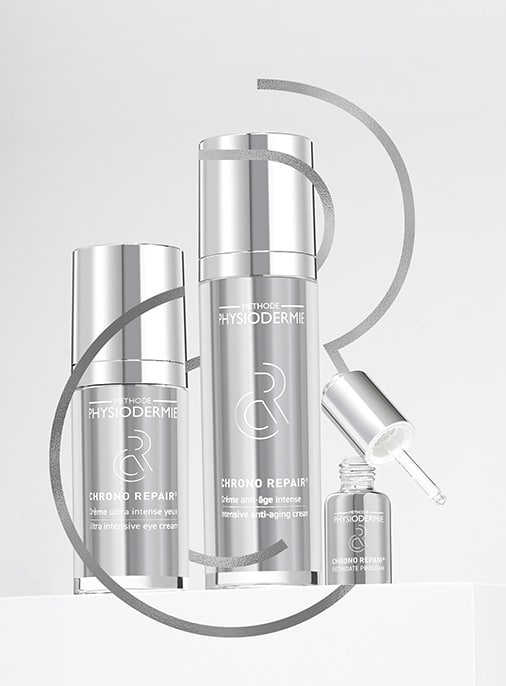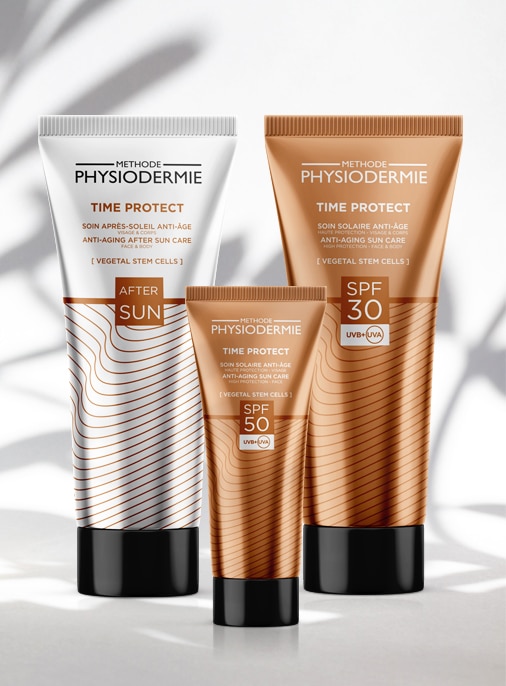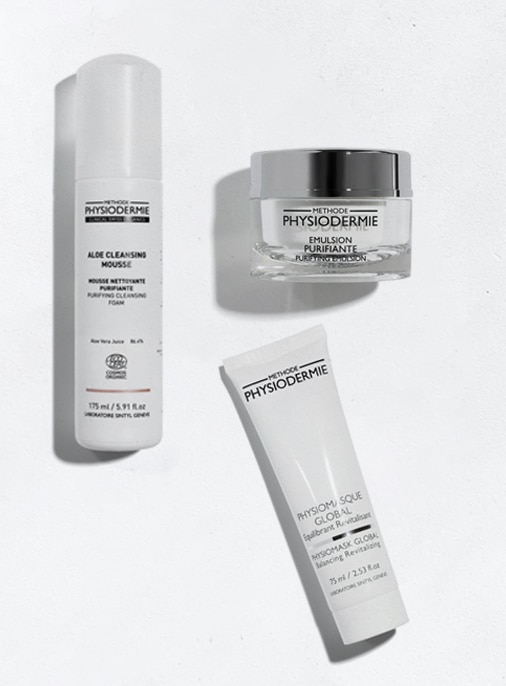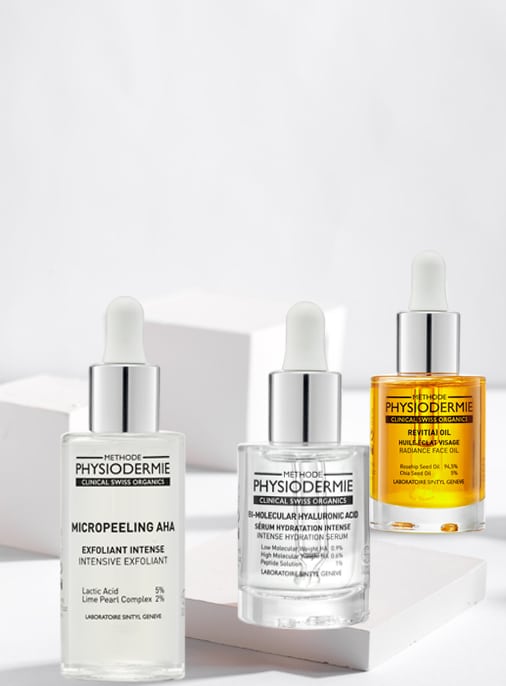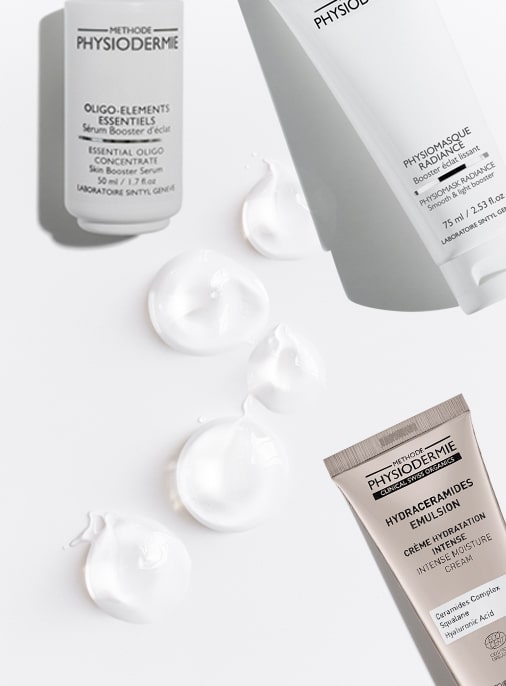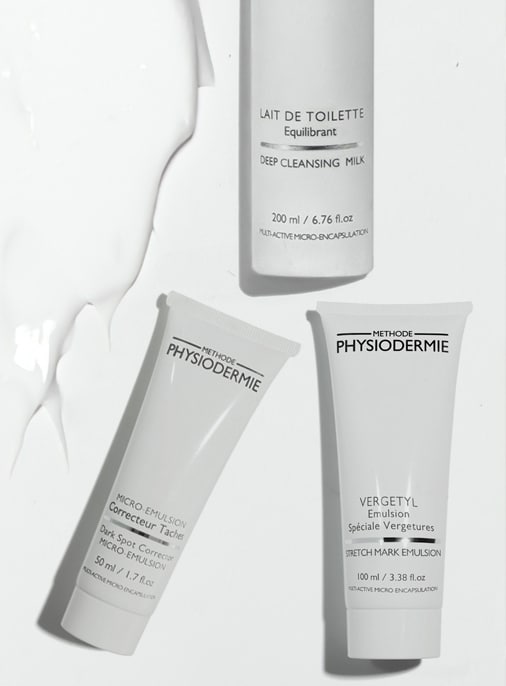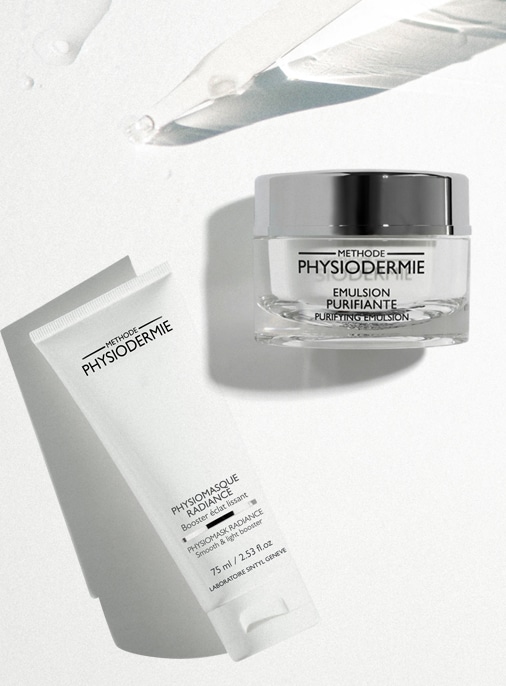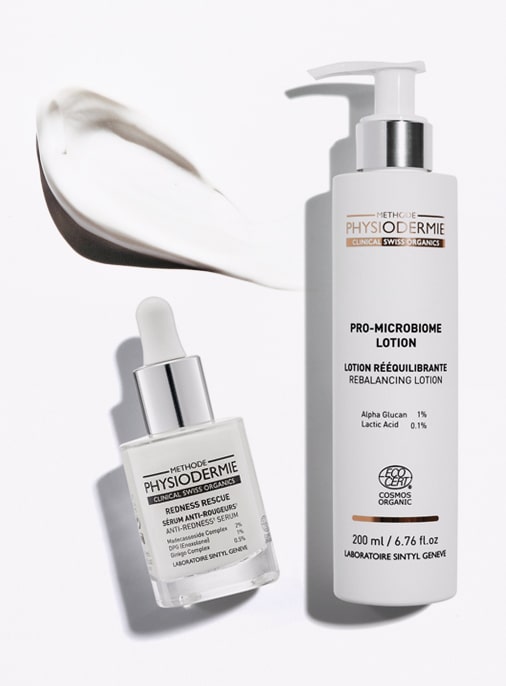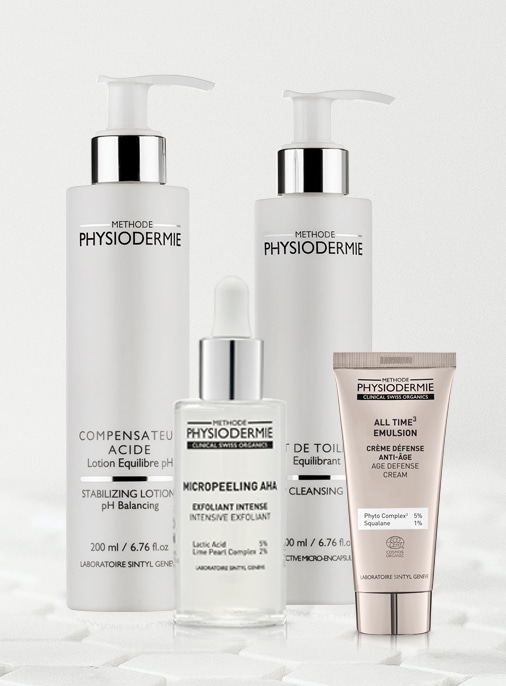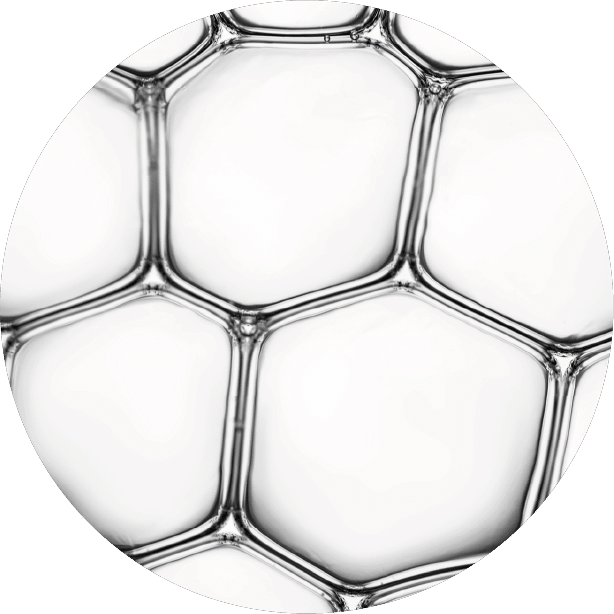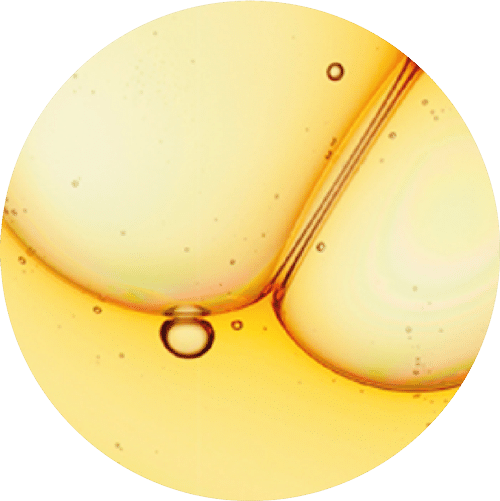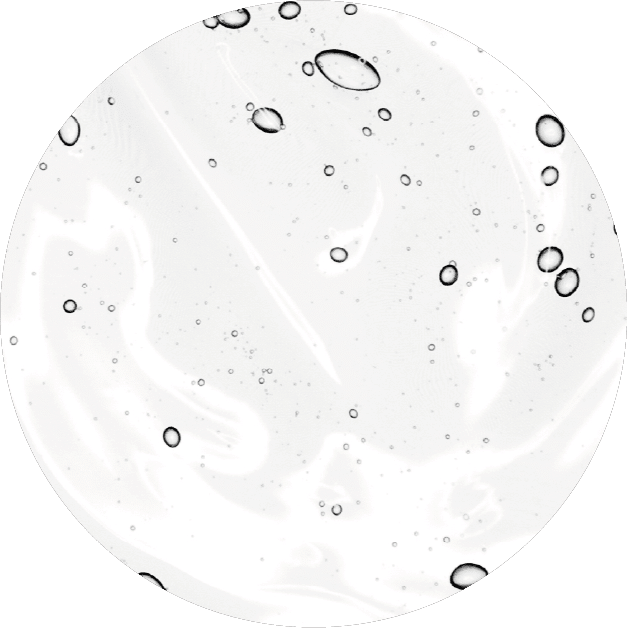THE SCIENTIST CORNER
Ingredients are carefully selected to guarantee the effectiveness and safety of our formulas
A RIGOROUS CHOICE OF INGREDIENTS
Physiodermie is a performance-drive skincare brand. Ingredients are carefully selected to guarantee the effectiveness and safety of our formulas: our R&D team is constantly innovating and meticulously testing formulas to find the perfect result. We never compromise on ingredients quality and our skincare are highly concentrated in active molecules extracted from plants and vegetable extracts, optimized by our proprietary Micro-Encapsulation technology.
ALOE VERA (juice)
Antioxidant
Anti-microbial
Anti-inflammatory properties
Improves the penetration of other ingredients into the skin
Sources:
- “Glutathione peroxidase activity, superoxide dismutase enzymes and a phenolic anti- oxidant were found to be present in Aloe vera gel, which may be responsible for these anti- oxidant effects.¹”
- “Anti-inflammatory and antibacterial properties thanks to salicylic acid it contains.²”
- “Cleansing and antiseptic properties thanks to Saponins Aloe Vera contains.²”
- “Enhances penetrative effect of the other ingredients into the skin thanks to Lignin itcontains.²”
¹ Khalaf et al. (2017), Evidence based medical use of aloe vera extracts, short review of literature, International Journal of Research in Medical Sciences.
² Surjushe, A., Resham V. and Saple, D. G (2008). Aloe vera: a short review. Indian journal of dermatology 53.4, pp. 163.
ALPHA GLUCAN (yeast extract)
Promotes microbiome growth, has a prebiotic effect Sources
Source:
- “α-Glucan stimulated the growth of beneficial resident flora, and its bioselectivity as a substrate will enable to restrict the growth of pathogenic flora. Ecological balance is very important to prevent invasion of external pathogen […]. Therefore, we concluded that α- Glucan had the possibility of prebiotics effect and expected that the product containing this material has a potential benefit for skin health.¹”
¹ Park, T. (2016). The prebiotic effect of Gluco-oligosaccharide on skin microflora, Staphylococcus. Conference Proceedings of IPC2016.
CERAMIDES COMPLEX (shea butter extract)
Has a lipidic intercellular cement function promotes skin’s protection
Moisturizing
Sources:
- “Important for the skin barrier.¹”
- “From a pharmaceutical and cosmetic point of view, we have good reason to believe that Ceramides are among the most important components to protect the skin.²”
- “Corneometer’s measurement of skin hydration has shown that Ceramide provides long-lasting hydration.³”
¹ Meckfessel, M.H. and Brandt, S. (2014). The structure, function, and importance of ceramides in skin and their use as therapeutic agents in skin-care products. Journal of the American Academy of Dermatology 71.1, pp. 177-184.
² Myoung Hee, L., Gae Ho L. and Jong Shin Y. (2003). Analysis of ceramides in cosmetics by reversed‐phase liquid chromatography/electrospray ionization mass spectrometry with collision‐ induced dissociation. Rapid communications in mass spectrometry 17.1, pp.64-75.
³ Sajna, KV. et al. (2015). White biotechnology in cosmetics. Industrial Biorefineries & White Biotechnology. Elsevier, pp. 607-652.
CHIA SEED OIL (from Chia seeds)
Restores the skin’s barrier thanks to Omega 6 (15%) and 9 (oleic acid, 7%) ➢ Soothing and revitalizing thanks to Omega 3 (62%)
Moisturizing
Sources:
- “Significant improvements in skin hydration.¹”
- “Omega-3 plant source.²”
- “The high proportion of α-linolenic acid makes Chia a superb source of Omega-3 (about 65% of the oil’s composition).²”
¹ Jeong, S. K., Park, H. J., Park, B. D., & Kim, I. H. (2010). Effectiveness of topical chia seed oil on pruritus of end-stage renal disease (ESRD) patients and healthy volunteers. Annals of Dermatology, 22(2), pp. 143-148
² Ullah, R. et al. (2016). Nutritional and therapeutic perspectives of Chia (Salvia hispanica L.): a review. Journal of food science and technology 53.4, pp. 1750-1758.
DPG (Dipotassium Glycyrrhizinate, enoxolone, liquorice extract)
Anti-inflammatory
Source:
- “Glycyrrhizin and its aglycone, glycyrrhetinic acid, are major active ingredients, whose antiphlogistic effect* has been proven in many models.¹”
*anti-inflammatory”
¹ Cael, D. (2009). Contribution à l’étude de la réglisse (Glycyrrhiza glabra L.) : ses How to uses thérapeutiques et alimentaires. Diss. UHP-Université Henri Poincaré.
FERULIC ACID (rice extract)
Antioxidant
Photoprotective
Sources:
- “It is widely applied in skin care formulations as a photoprotective agent (sunscreens), delayer of skin photoaging processes, and brightening component.¹”
- “Ferulic acid is considered a superior antioxidant.¹”
¹ Zduńska, K. et al. (2018). Antioxidant properties of ferulic acid and its possible application. Skin pharmacology and physiology 31.6, pp. 332-336.
GINKGO BILOBA COMPLEX (Ginkgo Biloba extract)
Antioxidant and protective
Promotes blood microcirculation
Sources:
- “The most helpful components of ginkgo are believed to be flavonoids, which have powerful antioxidant qualities, and terpenoids, which help improve circulation by dilating blood vessels and reducing the “stickiness” of platelets.¹”
- “Ginkgo contains high levels of flavonoids and terpenoids, antioxidants that provide protection against damage caused by dangerous free radicals.²”
¹ Mayoclinic.com (2017) [online].
² Nordqvis, J. (2017). Health benefits of Ginkgo biloba. Medicalnewstoday.com [online].
HYALURONIC ACID (Low molecular weight - From yeast fermentation and wheat)
Replenishing
Deep moisturizer Source
Source:
- “Made up of small molecules, Low Molecular Weight Hyaluronic acid penetrates the skin deeper. […] They make it possible to connect deep collagen production, stimulate cellular activity, plump the skin and prevent sagging skin. Thus, they indulged in deep hydration, a reduction in the appearance of the rides, a slowing down of the aging process of the skin. They help make the skin firmer.¹”
¹ Dr Forat (2019). Qu’est-ce que l’acide hyaluronique ? Ased.fr [online].
HYALURONIC ACID (High molecular weight - From yeast fermentation and wheat)
Film-forming, surface moisturizing
Source:
- “Hyaluronic Acid of High Molecular Weight forms a protective film and retains water on the surface of the skin. Thus, it is distinguished by an excellent moisturizing effect that gives the skin a smooth and silky appearance.¹”
¹ Dr Forat (2019). Qu’est-ce que l’acide hyaluronique ? Ased.fr [online].
LACTIC ACID LOW CONCENTRATION (From yeast and vegetable sugar)
Regulates the pH of the skin
Removes dead cells
Moisturizing
Sources:
- “pH regulator.¹”
- “A lactic acid lotion benefits skin by dissolving dead cells that accumulates on the surface of functioning skin. These dead cells lead to dry, dull skin and can prevent your skin treatments from working properly because they can’t be absorbed. Removing this accumulation is one of the most important parts of a skin care regimen.¹”
- “Lactic acid (as sodium lactate) is a well-known part of the skin’s natural moisturizing complex and is considered to be an excellent moisturizer.²”
- “It is one of the few substances used in cosmetics that is produced naturally by the body.³”
¹ Alsaheb, R. et al. (2015). Lactic acid applications in pharmaceutical and cosmeceutical industries. J. Chem. Pharm. Res 7.10, pp. 729-735.
² Sheau-Chung, T. and Yang, J-H (2018). Dual effects of alpha-hydroxy acids on the skin. Molecules 23.4, pp. 863.
³ Editorial, (2018). Lactic acid for brown spots. Brown Spots Faces. Retrieved from https://www.taches-brunes-visage.com/lacide-lactique-pour-les-taches-brunes.
LACTIC ACID HIGH CONCENTRATION (From yeast and vegetable sugar)
Exfoliating, promotes cell renewal Source
Source:
- “They (lactic acid and its salt) produced such effects as renewal and skin illumination.¹”
- “Lactic acid peels exfoliate your skin’s surface and help improve skin cell turnover rates. The removal of skin cells can help encourage the skin’s production of natural elastin and collagen. This in turn may help reduce the appearance of wrinkles and fine lines.¹”
¹ Alsaheb, R. et al. (2015). Lactic acid applications in pharmaceutical and cosmeceutical industries. J. Chem. Pharm. Res 7.10, pp. 729-735.
LIME PEARL COMPLEX (from caviar lemon)
Antioxidant
Exfoliant
Source:
- “Promotes exfoliation, physiologic desquamation, antioxidant properties.¹”
¹ Berman et al. (2018). The Importance of Skin Barrier Maintenance and Repair: Underlying Pathophysiology, Topical Formulations, Selected Natural Ingredients, and Clinical Study Outcomes. Journal of Clinical and Aesthetic Derma tology, January 2018 Supplement.
MADECASSOSIDE (Centella Asiatica extract)
Anti-inflammatory and healing
Anti-aging effect
Sources:
- “Antiallergic, anti-pruritic as well as anti-inflammatory activities of Centella asiatica can be attributed to the presence of glycosides like asiaticoside, madecassoside as well as triterpenes.¹”
- “Madecassoside is also an active component associated with the anti-aging and healing properties of wounds by promoting the synthesis of collagen I and collagen III.²”
¹ George, M. and Joseph, L. (2009). Anti-allergic, anti-pruritic, and anti-inflammatory activities of Centella asiatica extracts. African Journal of Traditional, Complementary and Alternative Medicines 6.4.
² Plengmuankhae, W. and Tantitadapitak, C. (2015). Low temperature and water dehydration increase the levels of asiaticoside and madecassoside in Centella asiatica (L.) Urban. South African Journal of Botany 97, pp. 196-203.
PEPTIDE SOLUTION (yeast extract)
Synthesis of collagen and elastin Sources
Sources:
- “Hexapeptide 11 may be useful for a variety of anti-aging benefits such as increasing skin tone and elasticity and may also improve skin hydration.¹”
- “Hexapeptides are a sequence of 6 amino acid peptides that are used in cosmetic care to increase collagen synthesis to improve skin tone and also to reduce the appearance of fine lines and wrinkles.¹”
- “This peptide protects the dermo-epidermal junction against the effects of skin ageing by stimulating the synthesis of anchor molecules such as integrins, fibronectin and collagens IV and VII. The extract promotes cohesion between the deep forming elements of the skin, maintains tissue repair by increasing the resistance of the dermo-epidermal junction to mechanical deformation.²”
¹ Formulator Sample Shop [online].
² Belfer, WA (2009). Cosmetic composition to accelerate repair of functional wrinkles. U.S. Patent No.
PHYTO COMPLEX³ (unique complex of 3 ingredients developed by Laboratoire Sintyl: Bearberry, Willow and Liquorice)
Anti dark spot and complexion unification
Stimulates cell renewal and improves the appearance of the skin
Antioxidant and lightening properties, tensor and firming effect on the skin
Sources:
- “Arbutin inhibits tyrosinase activity.¹”
- “It can be concluded that salicin has the ability to reduce the visible signs of skin aging when applied topically.² ³”
ROSEHIP SEED OIL (extracted from Muscat Rose)
Thanks to its richness in vegetable retinol (vitamin A), it is revitalizing, regenerating and promotes cell renewal
Sources:
- “Research in cosmetology has proven the effect of rosehip oil on reducing skin pigmentation, reducing scars and stretch marks, managing acne, rehydrating the skin, making it supple and reducing wrinkles. Even skin specialists recommend How to use musk rose oil as a skin revitalizing agent.¹”
- “Rosehip seed oil could be considered a valuable cosmetic component for the improvement of skin hydration, wrinkle appearance and skin firmness.²”
¹ Patel, S. (2013). Rose hips as complementary and alternative medicine: Overview of the present status and prospects. Mediterranean journal of nutrition and metabolism, 6(2), pp. 89-97.
² Van der Walt, AC. (2016). Transdermal diffusion stability and clinical efficacy of cosmetic formulations containing Rosa rubiginosa rosehip seed oil. Diss. North-West University (South Africa), Jarchefstroom Campus.
SALICYLIC ACID (extract from wintergreen)
Purifying, anti-acne
Exfoliant
Antibacterial
Sources:
- “Salicylic acid is traditionally used for its exfoliating effect.¹”
- “The acid cleanses pores by reducing excess sebum while exfoliating dead cells.²”
¹ Couteau C., Coiffard L., (2019). Un peu d’histoire : de l’écorce de saule à l’aspirine, l’acide salicylique le chaînon indispensable.
² Les applications et atouts de l’acide salicylique dans le cadre du soin de la peau.
SQUALANE (Olive extract)
Balances sebum production
Anti-aging effect
Restores the lipid barrier
Source:
- “In the cosmetics industry, squalane oil is used against skin-damaging free radicals that contribute to the signs of aging. It balances sebum production, providing enough moisture to keep the skin clear, healthy, and free from acne & eczema.¹”
SUPEROXIDE DISMUTASE (SOD - Yeast extract)
Antioxidant enzyme
Anti-aging effect
Source:
- “Superoxide dismutases (SODs) constitute a very important antioxidant defense against oxidative stress in the body.¹”
¹ Younus, H. (2018). Therapeutic potentials of superoxide dismutase. International journal of health sciences 12.3, pp. 88.
TOCOPHEROL (Soya extract, organic molecule of Vitamin E)
Antioxidant
Sources:
- “Acts as a powerful antioxidant, protecting cells.¹”
- “The water-soluble ascorbic acid (vitamin C) and the oil-soluble tocopherol (vitamin E) are the most prevalent antioxidants in the epidermis, and there is interest in delivering the antioxidant benefits of these vitamins to the skin.²”
¹ Käser, H. (2010). Naturkosmetische Rohstoffe, Linz, Verlag Freya, 3. Édition 2012.
² Schmid, D. et al. (2003). Penetration and metabolism of isoflavones in human skin. Cosmetics
and toiletries 118.9, pp. 71-76.
VITAMIN F (Extract of oil’s safflower)
Promotes skin reconstruction with Omega 6 (50%) and 3 (1%)
Source:
- “Often called Vitamins F, these essential fatty acids are known for their beneficial effects on the skin thanks to their ability to restore the transepidermal barrier.¹”
¹ Martini, M-C. and Seiller, M. (1999). Actifs et additifs en cosmétologie, 2ème édition, p.205.
ZINC GLUCONATE (Biosynthesis of a mineral and a vegetable sugar)
Soothing
Healing
Sebonormalizing
Sources:
- “The sebaceous gland production is decreased.¹”
- “Zinc can be an alternative treatment for inflammatory acne lesions.²”
¹ Martini, M-C. and Seiller, M. (1999). Actifs et additifs en cosmétologie, 2ème édition, p. 210 and p. 438.
² Alirezai, D. et al. (2001). Multicenter randomized comparative double-blind controlled clinical trial of the safety and efficacy of zinc gluconate versus minocycline hydrochloride in the treatment of inflammatory acne vulgaris. Dermatology, 203(2), pp. 135-140.
